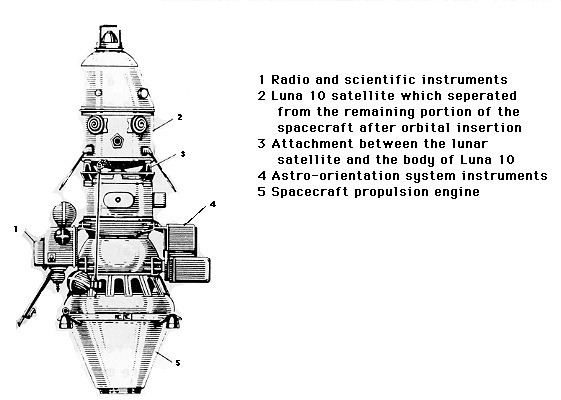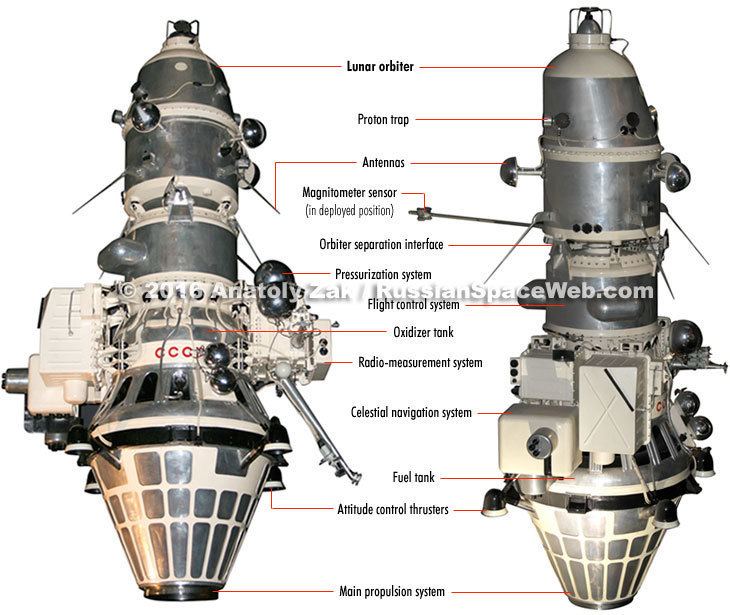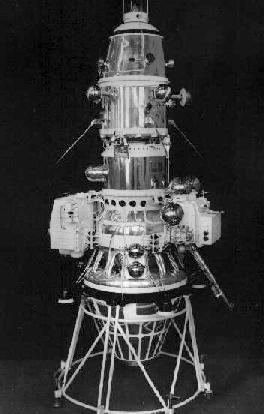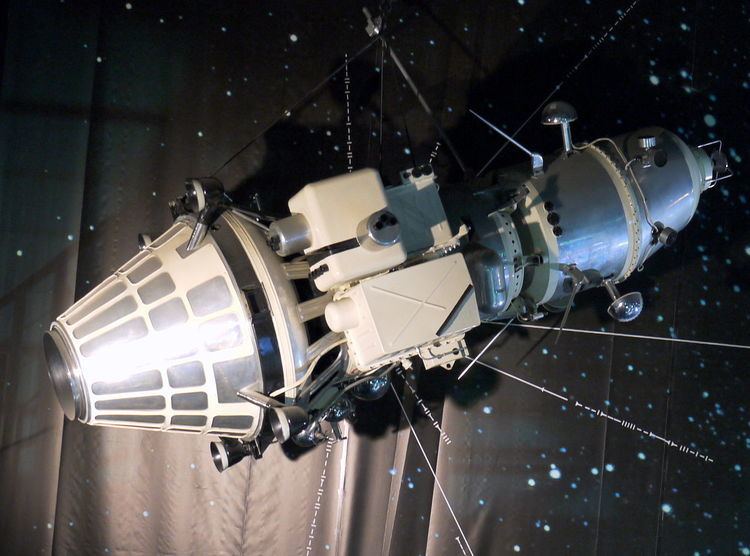Mission type Lunar orbiter SATCAT no. 2126 Spacecraft type E-6S Period 3 hours Launch mass 1,582 kg Last contact 30 May 1966 | COSPAR ID 1966-027A Mission duration 60 days Inclination 71.9° Launch date 31 March 1966 | |
 | ||
Similar Luna 17, Luna 2, Luna 1, Luna 22, Luna 3 | ||
1966 luna 10 ussr
Luna 10 (E-6S series) was a 1966 Soviet Luna program, robotic spacecraft mission, also called Lunik 10. It was the first artificial satellite of the Moon.
Contents

Luna 10 kerbal space program
The spacecraft

Scientific instruments included a gamma-ray spectrometer for energies between 0.3—3 MeV (50–500 pJ), a triaxial magnetometer, a meteorite detector, instruments for solar-plasma studies, and devices for measuring infrared emissions from the Moon and radiation conditions of the lunar environment. Gravitational studies were also conducted.
Luna 10 conducted extensive research in lunar orbit, gathering important data on the strength of the Moon’s magnetic field, its radiation belts, and the nature of lunar rocks (which were found to be comparable to terrestrial basalt rocks), cosmic radiation, and micrometeoroid density. Perhaps its most important finding was the first evidence of mass concentrations (called “mascons”)—areas of high density below the mare basins that distort lunar orbital trajectories. Their discovery has usually been credited to the American Lunar Orbiter series.
The flight

The Luna 10 spacecraft was launched towards the Moon from an Earth orbiting platform on March 31, 1966. The spacecraft entered lunar orbit on April 3, 1966 and completed its first orbit 3 hours later (on April 4, Moscow time). After a midcourse correction on 1 April, Luna 10, the second of two hastily prepared Soviet Ye-6S probes (that is, the backup), successfully entered lunar orbit two days later at 18:44 UT. A 245-kilogram instrument compartment separated from the main bus, which was in a 350 x 1,000-kilometer orbit inclined at 71.9° to the lunar equator.
Luna 10 was battery powered and operated for 460 lunar orbits and 219 active data transmissions before radio signals were discontinued on May 30, 1966.
The Internationale

The spacecraft carried a set of solid-state oscillators that had been programmed to reproduce the notes of "The Internationale", so that it could be broadcast live to the 23rd Congress of the Communist Party of the Soviet Union. During a rehearsal on the night of 3 April, the playback went well, but the following morning, controllers discovered a missing note and played the previous night’s tape to the assembled gathering at the Congress—claiming it was a live broadcast from the Moon.

